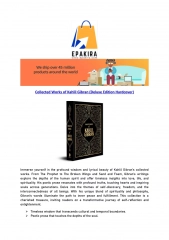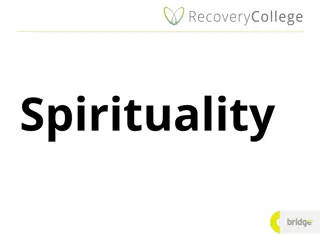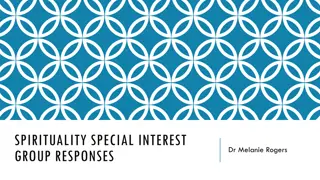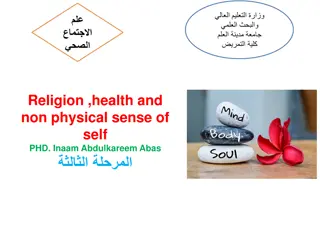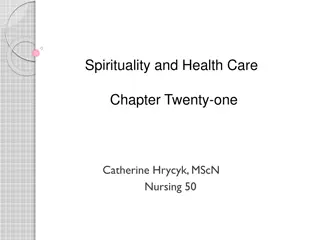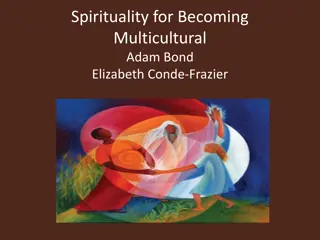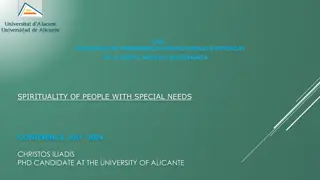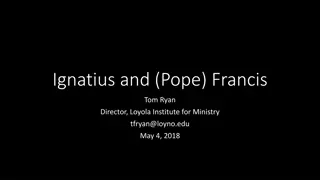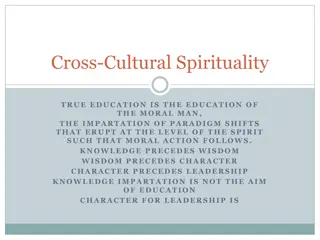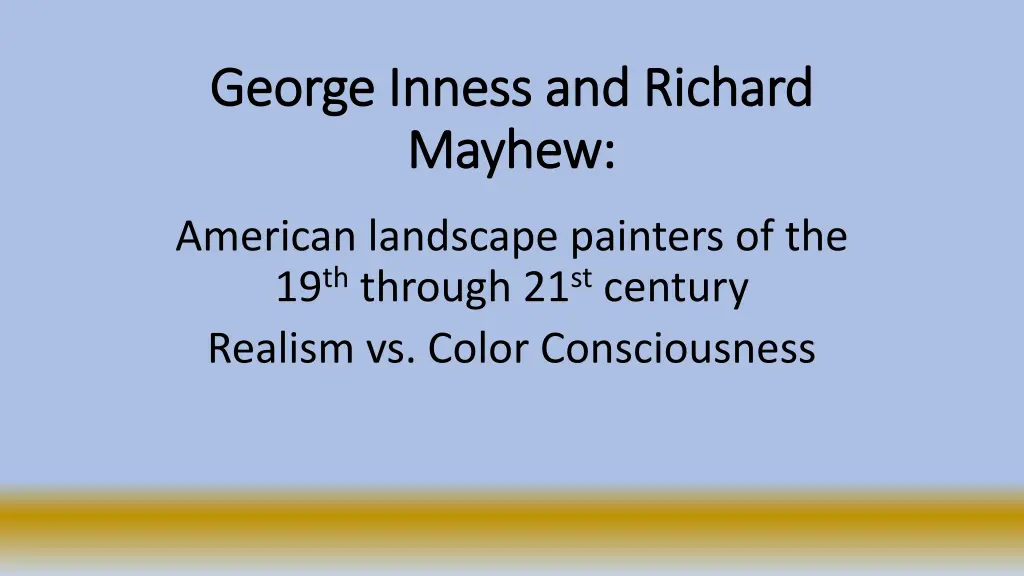
George Inness and Richard Mayhew: American Landscape Painters
Explore the works and influences of renowned American landscape painters George Inness and Richard Mayhew, known for their unique artistic visions spanning the 19th to 21st century. Delve into the contrast between realism and color consciousness in their masterpieces, shedding light on their distinctive approaches to interpreting landscapes through emotion and metaphor.
Download Presentation

Please find below an Image/Link to download the presentation.
The content on the website is provided AS IS for your information and personal use only. It may not be sold, licensed, or shared on other websites without obtaining consent from the author. If you encounter any issues during the download, it is possible that the publisher has removed the file from their server.
You are allowed to download the files provided on this website for personal or commercial use, subject to the condition that they are used lawfully. All files are the property of their respective owners.
The content on the website is provided AS IS for your information and personal use only. It may not be sold, licensed, or shared on other websites without obtaining consent from the author.
E N D
Presentation Transcript
George Inness and Richard George Inness and Richard Mayhew: Mayhew: American landscape painters of the 19ththrough 21stcentury Realism vs. Color Consciousness
Comparanda(to compare): The painters and their respective visions George Inness,1825-1894 Richard Mayhew,1924-2024
The purpose of the painter simply to reproduce in minds the impression scene has made upon him. work of art does not the intellect. It does not appeal to the moral sense. Its aim is to instruct, not to edify. George Inness George Inness What I do with What I do with landscapes is internalize landscapes is internalize my emotional my emotional interpretation of desire, interpretation of desire, hope, fear, and love. I hope, fear, and love. I don t attempt to mimic don t attempt to mimic the land but to use it as a the land but to use it as a metaphor. metaphor. I am both I am both African and Native African and Native American. This is why I American. This is why I paint paint landscapes. Their landscapes. Their blood is in the soil of the blood is in the soil of the United States. So, United States. So, instead of a landscape, instead of a landscape, it s a it s a mindscape. mindscape. Richard Mayhew Richard Mayhew Artist Quotes Different visions
We will now discus two works of art using comparandaby two landscape painters: Sante Fe Trail,1999, oil on canvas,40 x 48 by Richard Mayhew Medford,MA.1885,oil on canvas,20 x 31 , by George Inness
I have personally viewed both paintings. The St. Louis Art Museum (I am originally from St. Louis) owns the Inness painting. The Mayhew work is owned by a private collector. I had interviewed Mayhew in his studio in California on three different occasions. Richard was my main graduate mentor at Penn State University. He acknowledged his Inness influence. However, his departure from Inness and the impressionists for that matter, was in his embrace of Abstract Expressionism and color field painting from the 1950 s through the 1960 s.
George Inness was a 19thcentury white painter of a movement called tonalism. He also believed in a system of philosophy referred to as Transcendentalism, developed by Immanuel Kant. It is based on the idea that, to understand the nature of reality, one must first examine and analyze the reasoning process which governs the nature of experience. This artistic movement was based on a realistic approach to painting. Artists used realistic imagery, yet they softened and subdued the color tones of their palette to suggest depth or atmospheric perspective. .
Richard Mayhew, on the other hand ,was a 20ththrough 21stcentury painter with both African American and Native American heritage. Mayhew s approach is less realist based and concerned more about how color affects the eye and mind, in terms of afterimages or simultaneous contrast.
Differences: Differences: Inness was self taught, whereas Mayhew studied with great American painters such as Edwin Dickinson, Hans Hofmann, Yasuo Kuniyoshi and Rubin Tam. Inness was locked into a tonalist mindset which demanded a stylistic approach based on specific locales he had seen on location when painting outdoors or En plein air. Mayhew sketched and absorbed his study of the land in relation to his belief of a universal universal landscape he refers to as a mindscape. mindscape. Thus, all of his life experiences coalesce or come together in his painting process. Memories and Color Color theory and application were the most important elements for Mayhew, as colors are always in flux or change as one views each painting. Here, Mayhew stands next to an untitled painting at age 95.To quote: But the influence of place and environment and community play into the creative consciousness. The unique sensibility of the creative mind-set, is an important quality. For me, ethnicity is more about emotional interpretation than identifying with a particular place. My mindscapes are also about the healing of that long trauma that the black and native communities have experienced collectively
Mayhew had also alluded to his interest in a scientific approach regarding the phenomena of simultaneous contrast or after image. It is well known that French Impressionist painters such as Georges Suerat were influenced by Michel Chevreul, a French chemist, who lived from1786-1889. Here, Chevreul s color model represented the complete range of shades, tones and tins of every hue, but his concept of tone confounded lightness (value) and saturation. Chevreul identified a fundamental law of thesimultaneous contrast contrast of colors which detailed the effects that proximity between two colors has on what the eye sees. simultaneous
In conclusion, both American artists used landscape as subject matter, painted in oil on canvas , yet had different approaches regarding composition , painting sizes, the element of color (realistic ,detailed and mostly small format for Inness vs. acidic intense, abstract and simplistic color and large format for Mayhew).Both artists were products of their time, yet arrived at very different meanings for their respective paintings. Inness was more concerned with transcendentalism, the view that nature, including human beings, has the power and authority traditionally attributed to an independent deity. Whereas Mayhew used color as symbolic of his personal ethnicity, in that both his African and Native American s blood is in the soil of the United States. He was also keenly aware that intense color has the power to affect our consciousness and make us aware of truly human aspects his mindscapes have on our being!
Mayhew and I at a Chicago gallery in 2005 The following is a video of Richard Mayhew in his own words
https://youtu.be/LBiddIDb1Vc https://youtu.be/OfIZAN2LJLQ?si=X5s1IUXl4zJRqB3x

